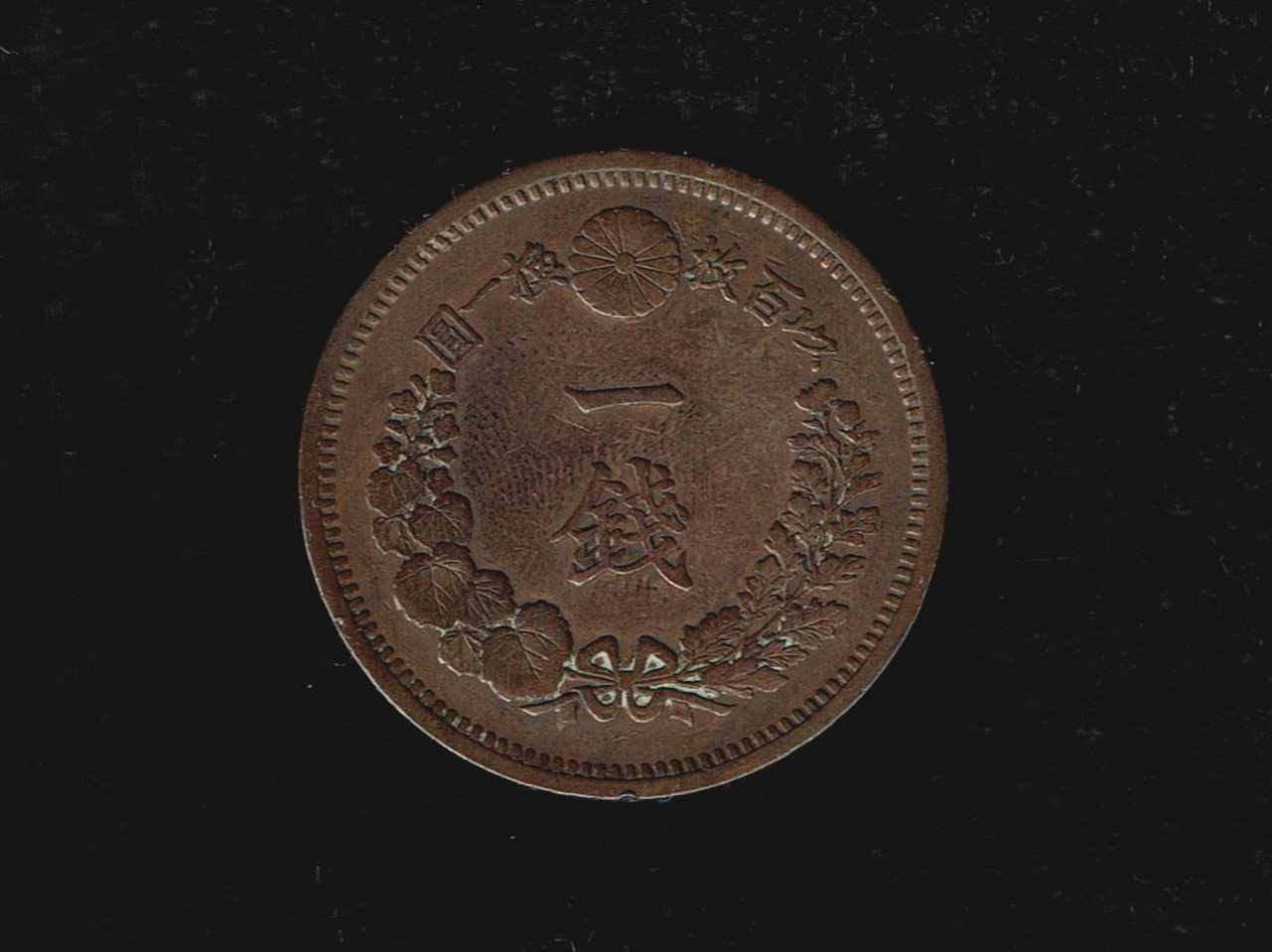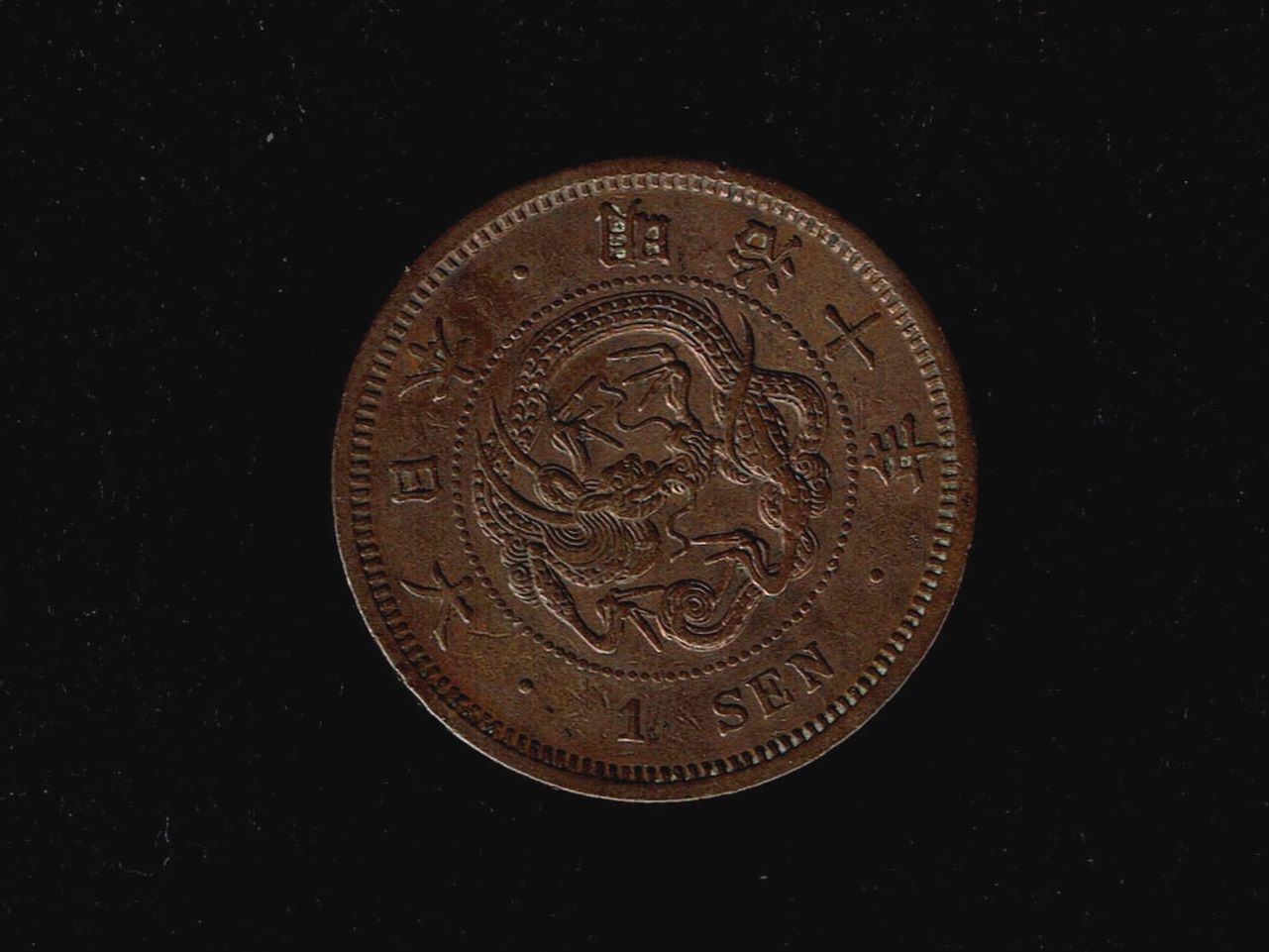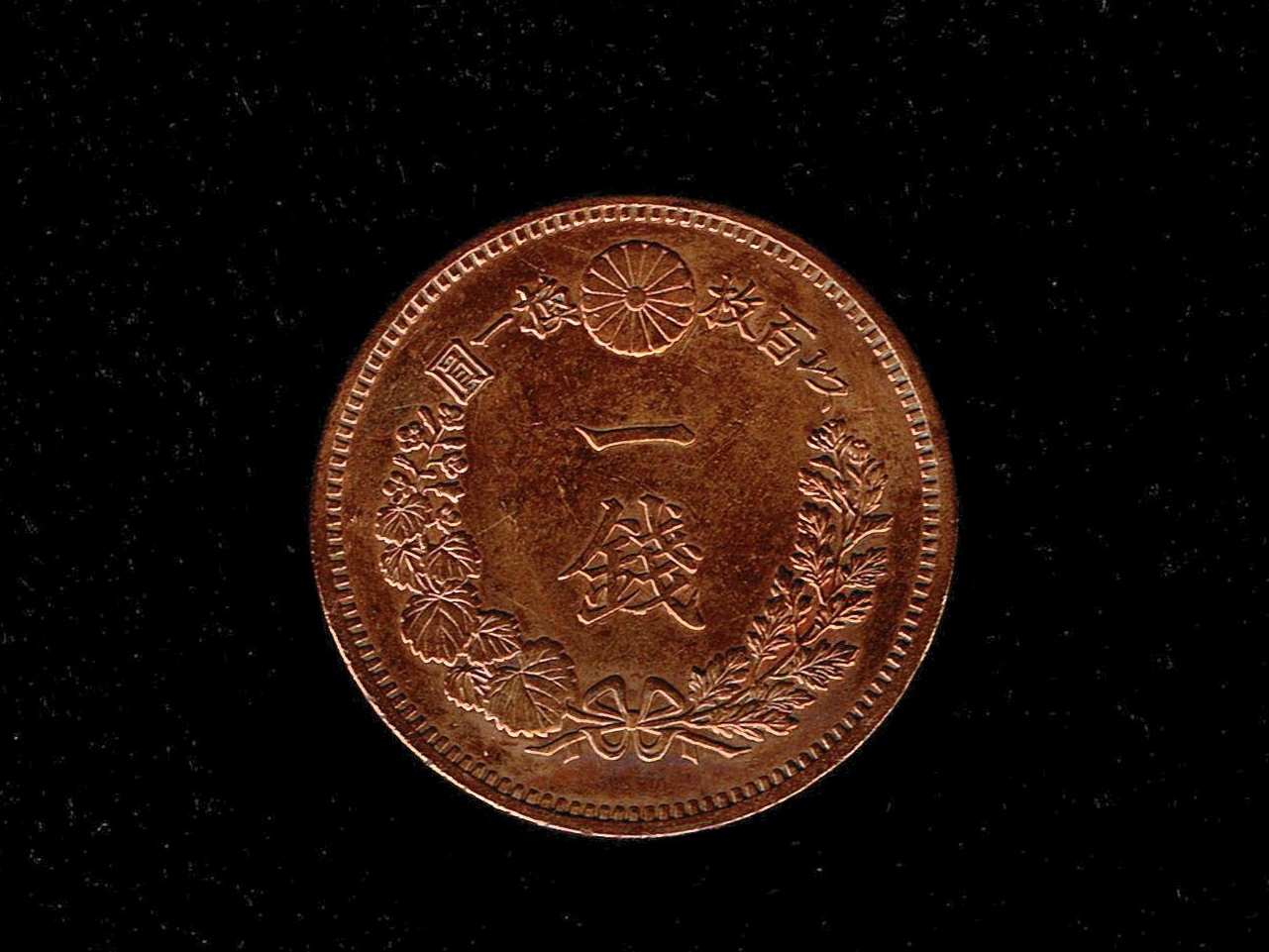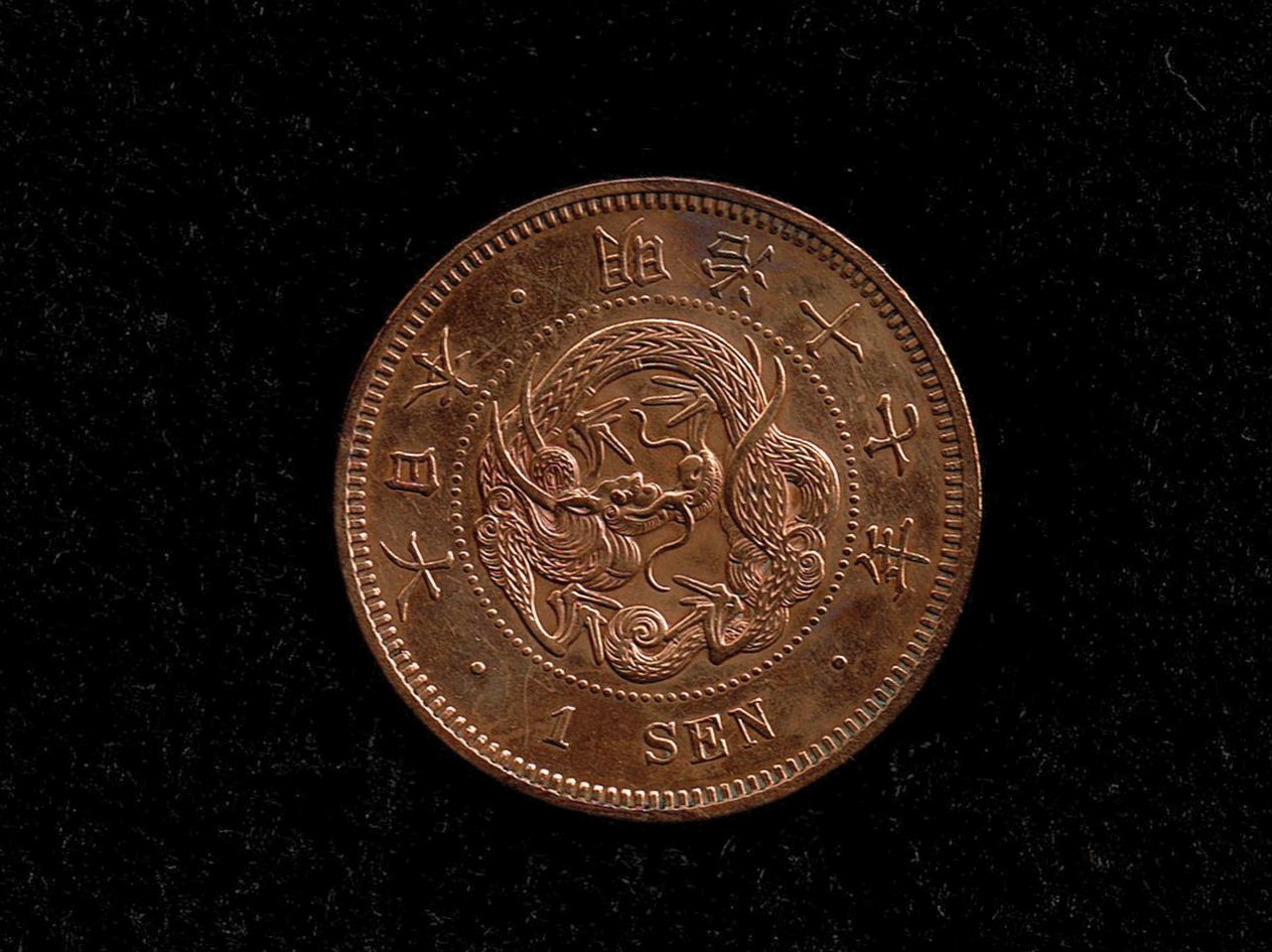Dragon 1 Sen (Copper)
竜一銭銅貨


Minted in Meiji 3, Square scale dragon, Diameter: 27.9mm, Weight: 6.95g
Data
- Issued / Banned: Meiji 4 (1871) / Showa 28 (1953)
- Manufacturing Period: Meiji 6 (1873) - 21 (1888)
- Number of Mintage: 488,174,149
- Material: Copper:980 Tin:10 Zinc:10
- Diameter: 23.97 mm
- Weight: 7.13 g
- Design: Face - Crest of chrysanthemum, twigs of chrysanthemum and paulownia/ Back - Dragon ("UnRyu", closed mouth dragon)
History of Issuance
- "Shinka Jorei" (New currency decree) proclaimed in Meiji 4 (1874) stipulates the issuance of western style coin of which shape is circle and made by striking with dies. However new copper coins issuance delayed. Japanese government have to concentrate on silver and gold coins to settle the situation that the currency system in Japan in those days were very confused dysfunctional.
- There were two reasons for dysfunctional currency system. One was the difference of the exchange ratio of silver to gold and silver between Japan and other countries and the other was the circulation of many bad quality and fake coins. Old copper coins are relatively stable in its quality and they are used as a valid coins. "Kan-ei 1 Mon" can be used as 1 Rin, "Kan-ei 4 Mon" as 2 Rin, "Tempo Tsuho" as 8 Rin.
- In the pattern coin, the word "以百枚換一圓" (100 for 1 yen) in large size are printed on its face and ""一銭" (1 Sen) on its back, but these Japanese words were changed to alphabets or deleted.
- Finally the first 1 Sen was issued in Meiji 6 (1874)with some minor update of design. The eastern dragon who closes its mouth is called "Unryu" is used while the silver coins adopted the "Aryu". "Aryu" means the starting, while "Unryu" means ending. These two express "all the things", "from starting to ending". It's originally coming from Buddhism in India.
- The side on which the dragon is printed, was stipulated as the face for the pattern coin, however, it is changed to the back when the coins were issued. It is considered just a correction of a mistake.
- From Meiji 6 to 10, the dragon with square scales were used for the design of the face. No coins were minted in Meiji 11 and 12, and the design of scales are change to jagged shape (See following photo) from Meiji 13,

 Minted in Meiji 17, jagged scales, 27.9 mm, 7.05 g
Minted in Meiji 17, jagged scales, 27.9 mm, 7.05 g - The issuance of this coin interrupted in Meiji 21 since sufficient amount were circulated. The next 1 Sen was Rice 1 Sen (Bronze) Jissued from Meiji 30 (1897) under the new currency low, "Kahei hou".
Rarity
- For common minted year and Very Fine grade 200 - 300 yen. Meiji 6 coins are most valuable but around several thousand yen. Uncirculated especially non-oxidized (with metallic luster) copper coins are very rare and traded in over 10 thousand yen for common year.
- There are some valiants of design, the famous one is "Daishi" (Large 4) in Meiji 14, which is very rara. There exits some variants on letter 9 "九" for Meiji 19 coins.
Comments
- Japanese new government studied the currency system and coins of western countries such as United Kingdom, Germany, and United States. "以百枚換一圓" which means "one hundred for yen" is following "ONE HUNDRED FOR DOLLAR" in the edge of the coins in united states.
- This coin is made from copper and not so hard and durable, many coins are worn and the design is not so clear. It was improved in the successor "Pau 1 Sen (Bronze)" by increasing the tin content.
Other coins in this period
- New 1 Yen (Silver)
- Dragon 50 Sen (Silver) J
- Dragon 20 Sen (Silver) J
- Dragon 10 Sen (Silver) J
- Dragon 5 Sen (Silver) J
- 2 Sen (Copper) J
- 1/2 Sen (Copper)
- 1 Rin (Copper)
Released: Apr 19, 2022


 Move to Home(J)
Move to Home(J)